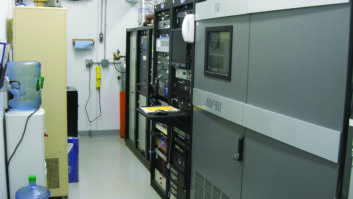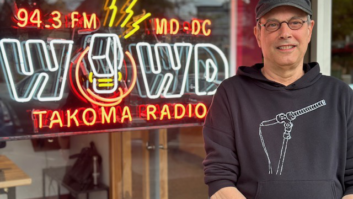
Use the list of assets to be conveyed as a checklist as you inspect the equipment. As I scan the trades, it is evident that broadcast station trading is ramping up again. Stations are being bought and sold in various locations, and I suspect that this will continue.
Buying a radio station is, in some respects, like buying a used car. Caveat emptor is the rule, and you can easily end up with a pig in a poke if great care is not exercised in the due diligence process.
Over the years, I have done a lot of due diligence work on station trades, and I have also worked with local station and market engineers on such transactions. In my dealings on the local level, it has been my experience that local station and market engineers are often not equipped for such tasks. It’s not that they don’t have the skills; it’s that they don’t have the right mindset.
ENGINEERS ARE CRUCIAL
The decisions that go into the process of a station acquisition are based in large part on the findings and recommendations of the engineer. A mistake or oversight at the technical due diligence stage can have a far-reaching impact on the operation and success of that station.
In this column, I hope to convey some of the things that an engineer should be looking for and thinking about in performing due diligence for a station acquisition.
The primary concern that a station owner or GM will usually have in an acquisition is coverage. That would seem to be a fairly simple question to answer. Drive the signal and find out. But it really goes deeper than that. Starting with knowledge of the facility (power, HAAT, directional pattern, transmitter site location relative to the market, etc.) the engineer should make some judgments and predictions before he sets out to evaluate the signal.

Carefully examine the lease agreement for shared sites and be certain what uses and activities are permitted and prohibited. For example, if an FM station is a rim-shot, driving the signal may not tell the whole story. The signal as observed in an automobile may seem fine, with just the occasional multipath flutter here and there in the expected places, but it may not be receivable indoors on home, tabletop or portable receivers. I’ve seen this time and again, and it leads to great frustration down the road.
So in addition to the usual signal drive, take a portable and/or tabletop radio indoors in select parts of the coverage area and see how the station does. If the purchase goes through and there are indoor signal frustrations down the road, at least the decision will have been made with that knowledge and the owner or GM won’t be blaming the engineer for not finding out and telling him about it in advance.
NIGHTTIME VS. AM
AM stations present even more challenges with regard to coverage determination. All of the above applies — check the indoor coverage in addition to driving the signal — but there is also the element of night coverage to deal with. Time after time, I have to explain to managers that just because a station does not change power or pattern does not mean that the coverage is the same at night. And just because the night coverage is good on the night of the drive test doesn’t mean it’s good every night. Ideally, the night signal should be evaluated over several different nights.
In one due diligence in the St. Louis market back in the 1990s, our local manager raved about the night signal of the station we were looking at purchasing, saying how it was just as good as the day coverage. As negotiations proceeded, the time came for me to go look at the station, and I found the same thing the local manager did — the night signal was good. Too good. So on the next evening, I set up in a nighttime null location with a FIM and watched the sun go down.

Make certain that STL transmit and receive facilities match the coordinates, heights and equipment/antenna types specified in the license. Not surprisingly, nothing changed. I waited 15 minutes past local sunset and still observed the same field intensity at that location. Finally, I called the request line and the jock picked up. I asked him if the station changed power or pattern at night. He said, “Oops” and hung up. I watched the needle on the FIM go to zero, then switching scales I found what should have been there every night. With a deep null right over the city, we decided to pass on the purchase. That would indeed have been a pig in a poke.
KEEP THAT INVENTORY
It almost goes without saying that a thorough inspection of the equipment complement is a vital part of the due diligence process. This is the one part of the process that local engineers are usually well-equipped to handle, so I won’t dwell on it here. Still, mistakes can be made.
It’s important that the seller provide the prospective buyer with a full inventory of the equipment and assets to be conveyed, and that should be the document the engineer works from as he does the inspection. Check off each item to confirm that it is there and make notes as to condition, operability, etc. Before settlement, the studio and transmitter sites should be re-inspected to confirm that each item on the list is still there and working. It’s not uncommon for last-minute substitutions to be made or for equipment to be missing altogether come settlement time.
REAL PROBLEMS
One critical area that most engineers may not think about is the real estate, land and/or structures and space that will be conveyed or leases that will be assigned. Land, particularly transmitter site land, can have all kinds of defects that will come back to bite a buyer at some point. It’s not uncommon for guy anchors or portions of the ground system to be located off the conveyed property. If not discovered in due diligence, that kind of defect can ruin your whole day.
I like to have a survey made prior to settlement. Often a seller will provide a survey, but the only way to know for sure that what you thing you are getting is what is actually being conveyed is to hand the surveyor the legal description from the agreement of sale, have him stake the property boundaries and then make a survey showing those boundaries and all the improvements.

This survey revealed an encroachment by a neighbor onto the station’s tower site. Sometimes such a survey will reveal an encroachment by a neighbor that can amount to adverse possession down the road. In one acquisition I was involved with, a residential neighbor had actually extended his backyard well into the tower site property — 30 feet or so — and installed a fence and playground equipment for his kids. By dealing with this up front, we allowed the neighbor to continue using that piece of dirt without giving up any of our rights, and we made a friend in the process.
The title report should be carefully examined and any exceptions noted. There may well be easements across the land that could impact towers, guy wires, buried transmission lines and the like. Public rights-of-way may extend well into the property, and even though a road may not exist there now, it may come some day and significantly impact the operation. Mineral rights not conveyed can also be a time bomb waiting to go off in some locations. Landowners often have little recourse when the mineral rights owner leases those rights to an energy company and the drilling rig rolls up.
Check with the county or municipality for the zoning, permitted uses, conditional use permits and the like. It’s not uncommon for tower sites to have conditional use permits or variances, and sometimes these may have time limits or triggers. If a conditional use permit has a 25-year span and it was issued 23 years ago, the buyer will have to get it renewed or find a new piece of dirt in a hurry. It’s best to figure this out before the notice arrives in the mail.
GET A PRO FOR THE BUILDINGS
When it comes to transmitter or studio buildings, hire a credentialed local inspector to do a thorough inspection. There can be all kinds of hidden defects and damage that a station engineer would never pick up on, things that can cost big dollars down the line, such as mold, foundation problems or soft roof decking. Such defects can either be dealt with in the transaction, or the buyer can be prepared to deal with them post-settlement. Either way, it’s best to know early what the problems are.
PCBs, lead paint and asbestos aren’t nearly the issues they once were, but there can still be environmental hazards and liabilities that can come back and haunt the buyer if not discovered and dealt with. This is another area where the local engineer should insist on an outside professional. A “Phase 1” environmental study is a good place to start, and this consists of a topical inspection and a search of records for events that may reveal a problem. If anything of concern is revealed, a “Phase 2” can be conducted and the hazards can be dealt with.
TRICKY LEASES AND ITINERANT STLS
Leases can be really troublesome, and any due diligence should include a careful examination of the lease by the buyer’s attorney and by his engineer. The engineer should pay careful attention to the premises leased, HVAC, hours of operation, rooftop access (for STL antennas, etc.), electrical loads permitted (usually expressed in watts per square foot, which may or may not include lighting), submeters, etc. Watch out for uses and activities that are and are not permitted with an eye to what the buyer intends for the station. It may be necessary, for example, to negotiate additional space from the landlord or get a concession to install a satellite antenna or STL dish. Don’t assume the landlord will be willing.
It should probably not come as any great surprise that towers and antennas are not always where they are supposed to be. The due diligence should include a confirmation by GPS that the tower coordinates match those on the station license and antenna structure registration (be careful to convert between data used — Media Bureau records are in NAD27; Wireless Bureau and ASR records are in NAD83).
STL and ICR records are an area of particular concern. It’s no great secret that the FCC’s database for these stations is full of errors and omissions. The last thing a buyer needs is a notice of violation from an FCC inspector two weeks after settlement. Make sure the STL antennas are where they are supposed to be according to the license, or get the seller to file the appropriate paperwork to fix it.
Finally, it always seems to fall to engineers to inspect the public files and other documents during the due diligence process. It wasn’t all that long ago that a story was circulated about a buyer who got dinged by the FCC for missing issues/programs lists from a period of time prior to the assignment. The FCC, in response to the buyer’s argument that he should not be liable for the acts and omissions of the prior licensee, stated that the buyer should have performed a “stellar due diligence.” That’s a word to the wise in any station acquisition. It’s going to be impossible to go back and reconstruct missing I/P lists if the old staff is sent packing after settlement, so pay very close attention to these things.
NO SURPRISES
There are many opportunities for the acquisition process to become a less than satisfactory experience, but a careful due diligence can head off most of those things. Dig deep and make certain that you know exactly what is being conveyed in terms of signal, allocation, assets and real property and make certain that what you’re getting will do the job you need it to. The best surprise is no surprise.
Cris Alexander is the director of engineering at Crawford Broadcasting and a past recipient of SBE’s Broadcast Engineer of the Year award.












